LIQUID SOLIDS
Volute Dewatering Press
Innovative Sludge Dewatering Technology Offering many Advantages over Conventional Sludge Management Methods
CONCEPT
The PWTech® Volute* Dewatering Press is a unique product, originally developed in Japan, that offers many advantages over current sludge management practices. Patented worldwide, the Volute Dewatering Press is presently used in over 1,650 installations.
The key to the process is the "dewatering drum." This drum can achieve both thickening and pressing (dewatering) of the sludge in a single, compact operation. Thus the Volute Dewatering Press can take sludge as dilute as 0.1% solids directly from a treatment process, such as an oxidation ditch or clarifier, and produce a cake of over 20% solids. Separate thickening, storage, and conditioning processes are eliminated. In addition, the need for operators, continuous use of wash water, and high power consumption are eliminated.
UNIQUE DEWATERING DRUM DESIGN
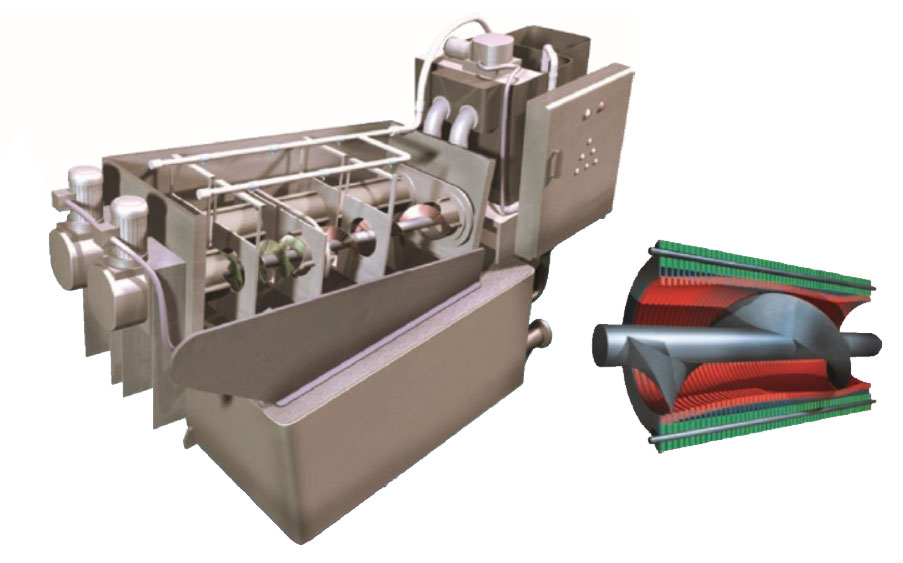
Screw presses are a neat, simple way of conveying and dewatering sludge. They typically have a single bearing or bushing at one end and a gear drive at the other end–simple, robust, and low maintenance. However, the screws for dewatering typically have a casing with openings in it to allow fluid to escape from the sludge as it is pressed. If these openings are too small, they constantly plug with solids, preventing fluid from leaving the sludge. Therefore, the openings are usually fairly large, which means that the sludge cannot be pressed too much as it will extrude through the openings. The result is that screw presses generally do not achieve good cake solids.
Unlike traditional screw presses, the Volute Dewatering Press features the unique "dewatering drum." Spacers and fixed rings are held in place on tie rods. Moving rings, slightly smaller than the outer diameter of the screw and slightly narrower than the spacers, are located between the fixed rings and are moved by the screw. The constant movement of the moving rings cleans the fine gaps between the moving and fixed rings, preventing clogging. The moving rings also cut into the sludge cake, allowing additional surface area for the release of moisture.
The initial section of the dewatering drum is the thickening zone. The filtrate is discharged here. The pitch of the screw narrows and the gaps between the rings decrease towards the end-plate where solids are discharged. Pressing of the sludge occurs here.
PROCESS DESCRIPTION
Sludge is fed into a mixing tank where polymer is thoroughly mixed in. The sludge then passes through a flocculation tank where gentle mixing and flocculation occurs. From there, the sludge overflows into the dewatering drum and is pressed. The entire operation is controlled by the Volute Dewatering Press control panel.
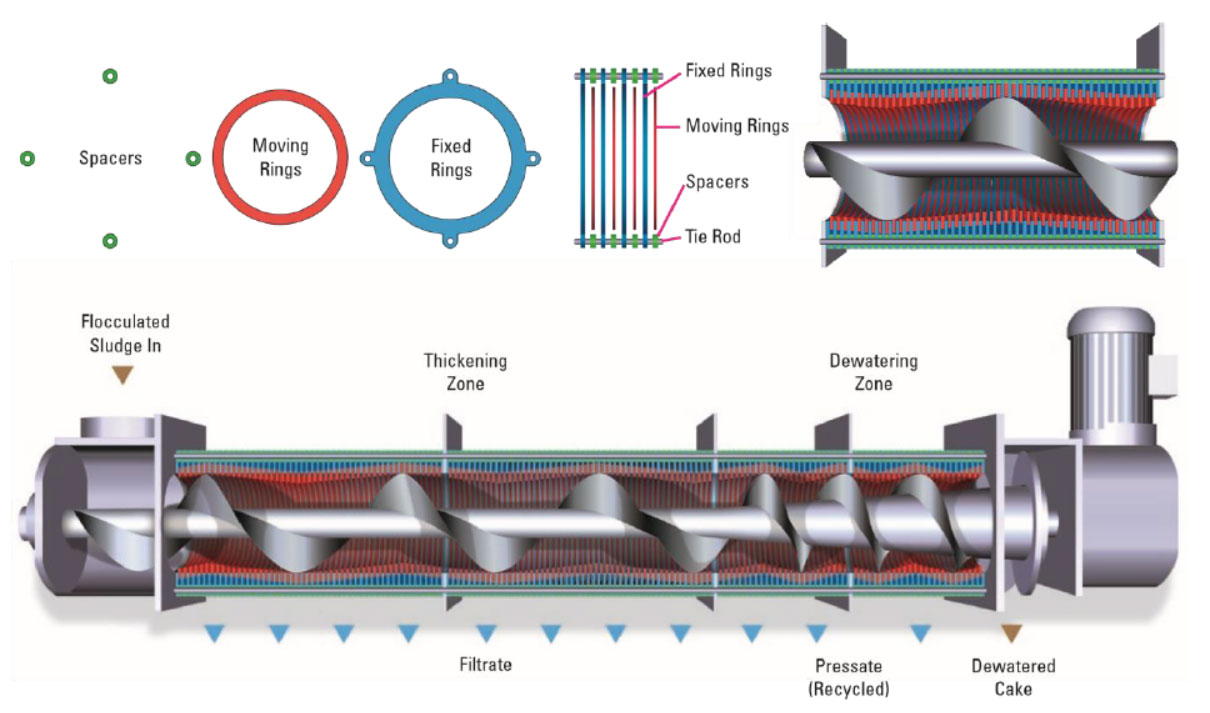
THE VOLUTE SYSTEM
The Volute Dewatering Press is designed to be a fully automated system capable of starting up, operating, and shutting down with no operator intervention. This is possible because the control panel is designed to control the automated polymer feed system, the unit sludge feed pump, and any conveyors required to remove dewatered cake, all in addition to the Volute Dewatering Press itself. Thus, all components of the dewatering system work together, automatically starting up, operating, and shutting down as required. PWTech can provide complete systems or work with other suppli- ers to provide an integrated package. In addition, unit operating and alarm outputs for connection to plant PLC/SCADA systems are standard.
ADVANTAGES
OPERATION AND MAINTENANCE
The Volute Dewatering Press requires very little operator attention, other than periodic inspection and chemical replenishment. As a fully automated process, it controls the operation of wast- ing sludge directly from the biological process or clarifier, chemi- cal make-up and dosing, flocculation, and then dewatering. Depending on operating conditions, a partial overhaul of the dewatering drums may be required every three years. This two-hour operation is undertaken in the field, with minimal disruption to plant operation.
Results Achieved with the Volute Dewatering Press:
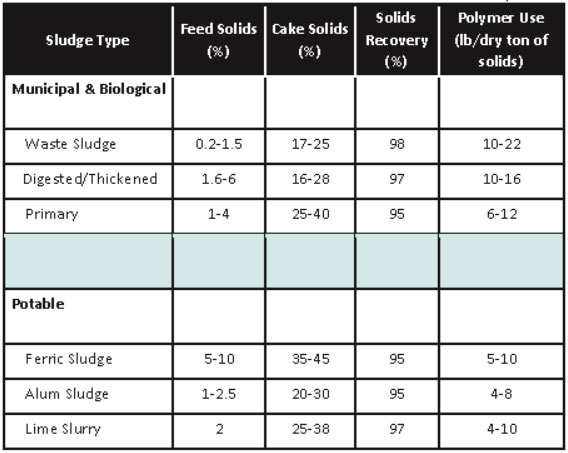

Volute technology was pioneered by AMCON, Inc. and introduced in 1991. It innovates sludge dewatering and sludge thickening by automatically and continuously self-cleaning the filter mesh, eliminating clogging for stable and constant dewatering. Volute technology is available in the U.S. only through PWTech.
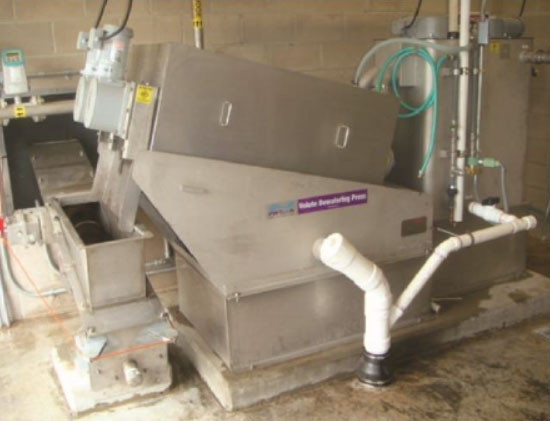
The Volute Dewatering Press is designed to be fully automated, capable of starting up, operating, and shutting down with no operator intervention.
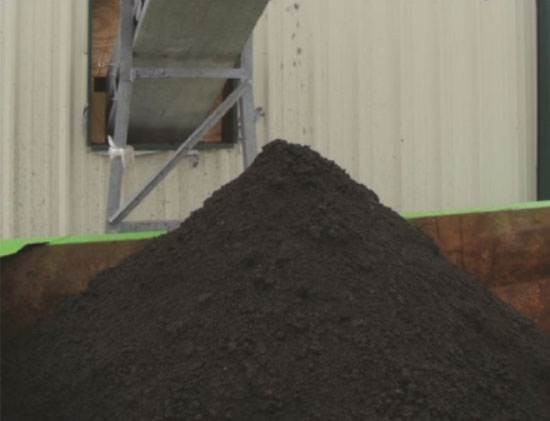
Solids generated by the Volute Dewatering Press.
APPLICATIONS
Standard Volute Dewatering Press Models
A REVOLUTION IN MUNICIPAL SOLIDS HANDLING
The PWTech Volute Dewatering Press can be set up to achieve both wasting and dewatering of sludge in a single operation. By feeding the Volute Dewatering Press directly from the biological process or the RAS piping the unit can automatically switch on and waste and dewater the sludge in one operation.
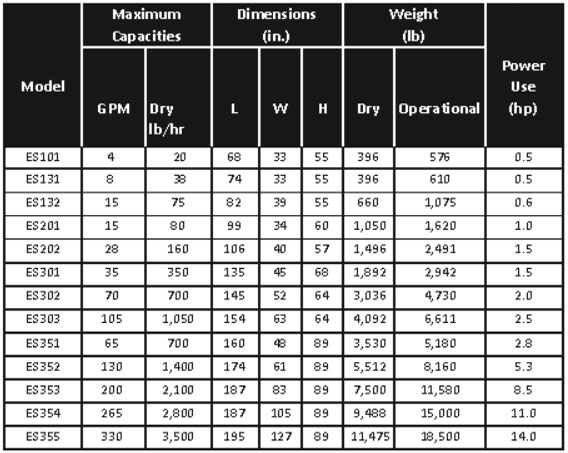
← Back to Liquid Solids
The PWTech® Volute* Dewatering Press is a unique product, originally developed in Japan, that offers many advantages over current sludge management practices. Patented worldwide, the Volute Dewatering Press is presently used in over 1,650 installations.
The key to the process is the "dewatering drum." This drum can achieve both thickening and pressing (dewatering) of the sludge in a single, compact operation. Thus the Volute Dewatering Press can take sludge as dilute as 0.1% solids directly from a treatment process, such as an oxidation ditch or clarifier, and produce a cake of over 20% solids. Separate thickening, storage, and conditioning processes are eliminated. In addition, the need for operators, continuous use of wash water, and high power consumption are eliminated.
UNIQUE DEWATERING DRUM DESIGN

Screw presses are a neat, simple way of conveying and dewatering sludge. They typically have a single bearing or bushing at one end and a gear drive at the other end–simple, robust, and low maintenance. However, the screws for dewatering typically have a casing with openings in it to allow fluid to escape from the sludge as it is pressed. If these openings are too small, they constantly plug with solids, preventing fluid from leaving the sludge. Therefore, the openings are usually fairly large, which means that the sludge cannot be pressed too much as it will extrude through the openings. The result is that screw presses generally do not achieve good cake solids.
Unlike traditional screw presses, the Volute Dewatering Press features the unique "dewatering drum." Spacers and fixed rings are held in place on tie rods. Moving rings, slightly smaller than the outer diameter of the screw and slightly narrower than the spacers, are located between the fixed rings and are moved by the screw. The constant movement of the moving rings cleans the fine gaps between the moving and fixed rings, preventing clogging. The moving rings also cut into the sludge cake, allowing additional surface area for the release of moisture.
The initial section of the dewatering drum is the thickening zone. The filtrate is discharged here. The pitch of the screw narrows and the gaps between the rings decrease towards the end-plate where solids are discharged. Pressing of the sludge occurs here.
PROCESS DESCRIPTION
Sludge is fed into a mixing tank where polymer is thoroughly mixed in. The sludge then passes through a flocculation tank where gentle mixing and flocculation occurs. From there, the sludge overflows into the dewatering drum and is pressed. The entire operation is controlled by the Volute Dewatering Press control panel.

*Volute is registered with the U.S. Patent and Tradenark Office as a registered trademark of AMCON, Inc., Yokohama, Japan.
THE VOLUTE SYSTEM
The Volute Dewatering Press is designed to be a fully automated system capable of starting up, operating, and shutting down with no operator intervention. This is possible because the control panel is designed to control the automated polymer feed system, the unit sludge feed pump, and any conveyors required to remove dewatered cake, all in addition to the Volute Dewatering Press itself. Thus, all components of the dewatering system work together, automatically starting up, operating, and shutting down as required. PWTech can provide complete systems or work with other suppli- ers to provide an integrated package. In addition, unit operating and alarm outputs for connection to plant PLC/SCADA systems are standard.
ADVANTAGES
- No need for thickeners, sludge storage, or separate dosing facilities
- No need for regular operator attendance
- Produces high-quality filtrate, does not need to return to the head works (i.e. high solids recovery)
- Extremely low power consumption–up to 95% less than many other dewatering processes
- Low noise, low odor
- Low wash water consumption
- Able to handle oily sludges
- Flexible–can deal with feed sludges from <0.2% to >4%
- Rapid installation
- No need for regular operator attendance
- Produces high-quality filtrate, does not need to return to the head works (i.e. high solids recovery)
- Extremely low power consumption–up to 95% less than many other dewatering processes
- Low noise, low odor
- Low wash water consumption
- Able to handle oily sludges
- Flexible–can deal with feed sludges from <0.2% to >4%
- Rapid installation
OPERATION AND MAINTENANCE
The Volute Dewatering Press requires very little operator attention, other than periodic inspection and chemical replenishment. As a fully automated process, it controls the operation of wast- ing sludge directly from the biological process or clarifier, chemi- cal make-up and dosing, flocculation, and then dewatering. Depending on operating conditions, a partial overhaul of the dewatering drums may be required every three years. This two-hour operation is undertaken in the field, with minimal disruption to plant operation.
Results Achieved with the Volute Dewatering Press:


Volute technology was pioneered by AMCON, Inc. and introduced in 1991. It innovates sludge dewatering and sludge thickening by automatically and continuously self-cleaning the filter mesh, eliminating clogging for stable and constant dewatering. Volute technology is available in the U.S. only through PWTech.

The Volute Dewatering Press is designed to be fully automated, capable of starting up, operating, and shutting down with no operator intervention.

Solids generated by the Volute Dewatering Press.
*The AMCON, INC. logo is registered with the U.S. Patent and Trademark Office as a trademark of AMCON, Inc., Yokohama, Japan.
APPLICATIONS
- The PWTech Volute Dewatering Press has been installed to handle a wide range of sludges. It is especially useful when sludges have a high oil and fat content that would blind filter materials.
Other sludges the Volute Dewatering Press has been shown to work well on include:
- DAF float from slaughter houses and other agricultural processes
- Food processing and wash-down wastes
- Oil sludge from machining operations
- Wastes from textile processing
- DAF float from slaughter houses and other agricultural processes
- Food processing and wash-down wastes
- Oil sludge from machining operations
- Wastes from textile processing
Standard Volute Dewatering Press Models
A REVOLUTION IN MUNICIPAL SOLIDS HANDLING
The PWTech Volute Dewatering Press can be set up to achieve both wasting and dewatering of sludge in a single operation. By feeding the Volute Dewatering Press directly from the biological process or the RAS piping the unit can automatically switch on and waste and dewater the sludge in one operation.
Key benefits of this include:
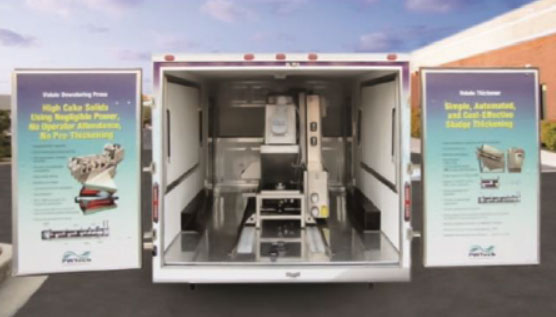 - Reduction in operator time with the wasting operation
- Reduction in operator time with the wasting operation
- No need for sludge storage tanks and additional pumping facilities and odor control–can be used to free up existing sludge storage facilities for other uses
- Increased process stability (wasting can occur over long periods of time or several times a day)
- Direct dewatering prevents additional nutrient load on the treatment plant by removing solids from the system before they break down and release nutrients
 - Reduction in operator time with the wasting operation
- Reduction in operator time with the wasting operation
- No need for sludge storage tanks and additional pumping facilities and odor control–can be used to free up existing sludge storage facilities for other uses
- Increased process stability (wasting can occur over long periods of time or several times a day)
- Direct dewatering prevents additional nutrient load on the treatment plant by removing solids from the system before they break down and release nutrients

All capacities, dimensions, and weights are approximate. Capacities will vary for different sludge types. Please note that these capacities are maximums. The hydraulic capacity (GPM) would be applicable for sludge with a solids concentration of under 1%. The solids throughput capacity would be applicable for sludge with a solids concentration of over 3%. The press should not be expected to exceed either of these numbers in any installation. Consult PWTech for a more accurate assessment of capacity for you application. Dimensions and power use do not include control panel, polymer make-up, and dosing systems.


